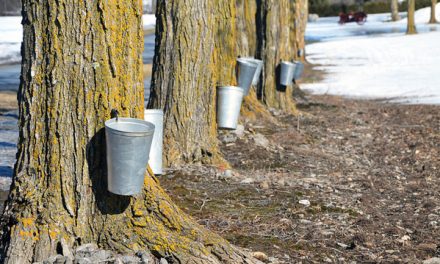Lavender has been used since ancient times for its medicinal and healing effects, unique fragrance, in skin care, and to enhance the flavour of food. The Romans added lavender to their bath water, hence the name from the Latin “lavare” which means “to wash”.
Lavender is an evergreen herb native to northern Africa and the mountainous regions of the Mediterranean. It belongs to the family of Lamiaceae which is also the family of mint, thyme (oregano), sage, rosemary, and basil.
The global lavender oil market’s size increased from US$ 28-million in 2014 to US$ 36-million in 2017. The projection for the next few years is that the lavender oil market size will expand to reach 47-million dollars by 2022 (as reported by Wise Guy Reports).
Lavender types and climate requirements
There are over 40 different species and over 450 varieties of lavender. The main commercial species are L. angustifolia (English lavender), L. intermedia (lavandin or French lavender) and L. latifolia (spike). Mature lavenders foliage range from grey to green and from 30 to 60 cm tall. Its flowers could be white, pink or pale purple, intense blue or violet. Lavender grown from seed is highly variable in appearance and characteristics. So, it’s usually propagated from vegetative cuttings, so the new plants are identical to the parent plants. It can take several months for the new plants to be ready to plant in the field. The lavender plant can survive up to 15 years. English lavender is hardy to Zone 5. It may be possible to grow it in colder zones with winter protection or consistent snow cover. Lavandin cultivars are generally only hardy to Zone 6 without protection. They may survive many winters and then die in colder winters. Canada’s plant hardiness maps are published by Natural Resources Canada to provide insights about what can grow where.
Some lavender’s cultivars, such as Provence, Albaand Tuscan Blue, are not hardy anywhere in Ontario and are not a good choice for large-scale plantings, even with winter protection as reported by the Ontario Ministry of Agriculture, Food and Rural Affairs (OMAFRA).
On the other hand, lavender requires well-drained soil and can’t survive in a saturated soil for an extended period. Therefore, lavender either needs sandy or sandy loam soils or a slope that allows the water to drain rapidly away from the plant. Lavender cannot be grown successfully on clay or clay loam soil without a slope or substantial raised bed.
Otherwise, lavender plants can tolerate most pests and diseases. However, they are not completely invulnerable to pests. Spittle bugs, whiteflies and aphids can be a nuisance to lavender plants.
Lavender in Ontario
Growing lavender in Ontario has a lot of potential for agri-tourism and value-added production. Agri-tourism-based lavender operations may not be successful in all areas. If the farm is on a side road well away from any other tourism destinations or population centres, it may be more difficult to attract visitors to the farm. Sale of value-added products online or in off-farm retail locations may be a better fit in this situation. In 2010, the Ontario Lavender Association (OLA) was created to represent the needs and interests of the Ontario lavender industry. Its mission is to grow a prosperous and vibrant Ontario lavender industry. More information about OLA can be found at ontariolavenderassociation.org.
Lavender harvesting & distillation
Lavender blooms from mid-June to late July in Ontario. The timing of harvest will depend on the end use of the lavender. Lavender harvested for oil extraction is best distilled immediately after harvest. The entire plant is covered with oil glands, which are in the star-shaped hairs that cover the plant. The most efficient oil extraction can be achieved by leaving about 20 cm of stem below the flowers and packing the distiller evenly. Essential lavender oil is produced using an extraction method known as steam distillation. Inside the distiller, the heat of the steam breaks down the plants to release the lavender oil molecules that are then carried by the steam up into the condenser. About 50 kg of stemmed fresh lavender flowers is needed to produce 1kg essential oil with the water vapour distillation. Essential oil content ranges from 1.0 to 1.5 per cent in stalked fresh flowers to five to six per cent in the stalkless dry flowers.
Lavender benefits
Lavender essential oils contain more than 100 compounds, with the two major constituents being linalool (about 30-45 per cent) and linalyl acetate (about 20-30 per cent). The use of lavender is found to have many relaxing, healing and therapeutic properties, such as:
* Wound healing: Researchers found that the bioactive nanofibrous dressings produced by the combined use of two naturally derived compounds, sodium alginate and lavender essential oil, can protect the wound from external agents and promote the regeneration of the new tissue.
* Stress reduction: Lavender has a calming scent which makes it an excellent tonic for the nerves and anxiety issues. It’s helpful in treating migraines, headaches, depression, easing muscle tension, nervous tension and emotional stress.
• Insomnia: The lavender fragrance is a relaxant that helps to induce sleep. Its scent lowers heart rate and blood pressure, putting the person in a relaxed state.
• General skin care: Lavender oil has antiseptic and antifungal properties. It is used to treat various skin disorders such as acne, wrinkles, psoriasis, and other inflammatory conditions.
• Respiratory disorders: Due to its anti-bacterial qualities, lavender oil is widely used for various respiratory problems including throat infections, flu, cough, cold, asthma, sinus congestion, bronchitis, whooping cough, laryngitis, and tonsillitis.
• Enhance the flavour of food: Culinary lavender improves digestion and can be used to add a delicious touch to honey, teas, salads, sauces, soups, meats or any other food.
• Hair care: Lavender essential oil is very effective in reducing dandruff and to treat hair loss, particularly for patients who suffer from alopecia, an auto-immune disease where the body rejects its own hair follicles.
• Bug repellent: Lavender essential oil is used in different products to deter mosquitoes and ticks. Also, it has anti-inflammatory qualities that will reduce the irritation and pain associated with bug bites.
Lavender oil adulteration
The pure lavender essential oil is expensive; the retail price in the international market may range from $500 to $3,500 per litre depending on the variety and origin.
In order to make essential oil less expensive, some suppliers extend or stretch the oils by diluting with fatty oils like almond oil, coconut oil etc., or by adding alcohol or by adding surfactants and emulsifiers. Sometimes these companies will label the new solution as a “blend,” but many times manufacturers will not, leaving consumers with a product that is less pure than stated.
If the essential oil is extended with fatty oil, it will have a greasy feel on the skin. The various diluents added as adulterants are abitol, benzyl alcohol, dipropylene glycol, and others. This addition has no odour contribution to essential oils and addition of 10-15 per cent can go unnoticed even by a trained nose. These adulterant materials can be revealed in specialized laboratories by using gas chromatography. However, the lavender oil available in the Canadian market is mostly produced from domestic reputed lavender farms. The Canadian Food Inspection Agency and Health Canada ensure that the products available for Canadians meet the highest standards and safety.












